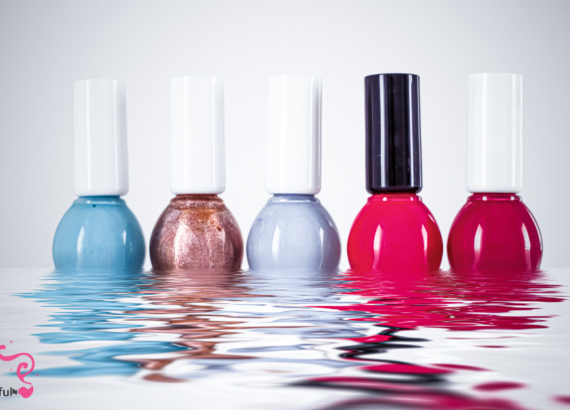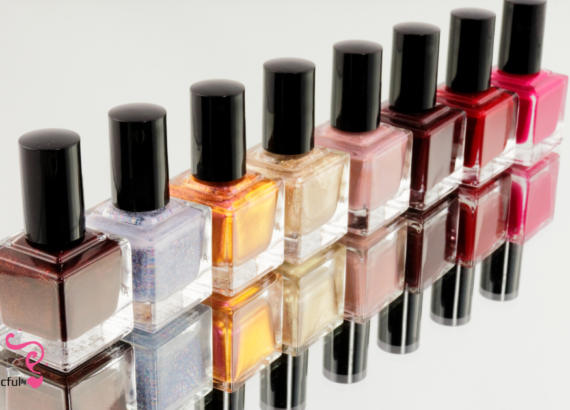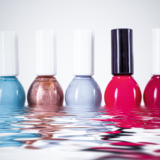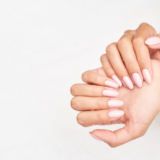Can You Swim with Acrylic Nails? Dive into the Details!

Are you eager to make a statement yet concerned about your artificial nails? We’ve all stood in front of a beautiful pool on a hot summer day, wondering if our magnificent acrylic nails will withstand the underwater trip. Can You Swim with Acrylic Nails? The good news is that you can swim with acrylic nails, but there are some important guidelines and precautions you should be aware of in order to keep those lovely fingers looking their best.
Acrylic Nails
Before we jump into the water, let’s first define artificial nails. Acrylic nails are man-made nail enhancements that are created by blending a liquid monomer with a powder polymer. This combination forms a strong, long-lasting, and glossy coating on your natural nails. Acrylic nails are popular because they are a great method to obtain long, beautiful nails or to add some additional flare with nail art and patterns.
Now for the main question: Can you swim while wearing artificial nails?
Can You Swim with Acrylic Nails?
Yes, you can swim while wearing artificial nails. Acrylic nails are made to be durable, so a brief dip in the pool or a relaxed day at the beach should not be an issue. However, there are a few things to keep in mind to guarantee that your acrylic nails stay in good condition during your aquatic activities.
1. Select the Proper Length and Shape
The first step in swimming with acrylic nails is to choose the appropriate nail length and form. Long, pointed nails may appear beautiful, but they are more prone to damage, especially in water. To reduce the chance of chipping or breaking when swimming, use shorter, more practical lengths and rounded or square forms.
2. Finish it up with a topcoat
Make sure your acrylic nails have a thick finish before going swimming. A good topcoat can give an extra layer of protection, reducing the likelihood of your nails absorbing water, which can cause lifting or weakening of the acrylic.
3. Stay away from chlorine and saltwater.
While acrylic nails may withstand a dip in the pool or ocean, you should limit your exposure to chlorine and saltwater. These chemicals are potentially damaging to both natural and synthetic nails. To develop a protective barrier, clean your nails with fresh water before swimming. Rinse them twice after swimming to eliminate any remaining chlorine or salt.
4. Maintain Dry Nails
One of the most important suggestions for keeping your acrylic nails in good condition when swimming is to keep them as dry as possible. Waterlogged nails are more prone to weakening and lifting. When swimming, consider wearing waterproof gloves or using a silicone finger protector to protect your nails from excessive wetness.
5. Use Pool Chemicals With Caution
before swimming in a chlorinated pool, exercise caution before entering the water. Pool chemicals may be damaging to artificial nails. Before you dive in, take a moment to cleanse your hands and nails with clean water. This reduces direct contact between your acrylic nails and the pool chemicals.
6. Cuticle Moisturizer
Chlorine and saltwater can be damaging to your skin and cuticles, affecting the health of your acrylic nails indirectly. To keep your nails and surrounding skin nourished, moisturize your cuticles on a regular basis, especially after swimming.
7. Ongoing Maintenance
Whether you swim or not, keeping your acrylic nails is essential for their lifespan and look. Schedule frequent fills and touch-ups with your nail technician to address any concerns like lifting or chipping as soon as possible.
The After-Swim Care Routine
Following a post-swim care routine for your acrylic nails is critical after you’ve had your fun in the water. Here’s a step-by-step strategy to keeping your nails in good condition:
1. Rinse:
Thoroughly rinse your hands and nails with fresh water to eliminate any chlorine or salt residue.
2. Dry gently:
Using a soft, clean cloth, pat your hands and nails dry. Avoid hard rubbing, which can create friction and damage to your acrylic nails.
3. Moisturize:
Keep your nails and surrounding skin hydrated by using a moisturizing nail and cuticle oil. This aids in the prevention of dryness and brittleness.
4. Topcoat Inspection:
Inspect your topcoat for signs of wear or damage. To retain protection, apply a fresh layer of topcoat as needed.
5. Inspect for Damage:
Look for evidence of lifting, chipping, or damage on your acrylic nails. Contact your nail technician for repairs or maintenance if you detect any problems.
Conclusion
Acrylic nails, in the realm of beauty and self-expression, allow you to show off your individual style while enjoying life’s joys, such as swimming. With the proper precautions and care regimen, you may swim in the pool without fear of breaking your acrylic nails.
So, the next time you’re standing at the pool’s edge, don’t be afraid to jump in and create a splash. Your acrylic nails are ready for the journey, and by following these guidelines, you can ensure they stay great and undamaged during your aquatic adventures. Enjoy your swim and keep those gorgeous acrylic nails on!








